Intel Expands 8th Gen Core: Core i9 on Mobile, Iris Plus, Desktop, Chipsets, and vPro
by Ian Cutress on April 3, 2018 3:01 AM ESTThe GIGABYTE H370N-WiFi
One of the motherboards we were sampled early was the GIGABYTE H370N-WiFi. This is GIGABYTE's latest mini-ITX motherboard, and in this case using the H370 chipset - traditionally GIGABYTE's H-series mini-ITX boards implement additional features, such as HDMI 2.0, and in this case, Wi-Fi.
The initial viewing of the board is one implemented more in function than overall style. The four-phase power delivery has a heatsink, the CPU is powered by an 8-pin 12V header, and the full length PCIe slot is shielded. GIGABYTE has two full-length DDR4 slots on this model, using double sided latches, and there are four SATA ports on the right hand side of the board out of a possible six that the chipset supports.
For storage, we get an M.2 2280 slot that sits above the chipset heatsink on the front, and another on the rear:
The two key parts on this motherboard that are going to be a little interesting start with the HDMI 2.0 implementation.
Here GIGABYTE is using the MegaChips MCDP2800 chip as an LSPCon to enable HDMI 2.0 from the processor. This is fairly common for HDMI 2.0, although due to the added LSPCon cost, we still only see it on a few motherboards - mostly GIGABYTE boards.
The other thing to note will be the Wi-Fi implementation. As the H370 chipset will support a native wireless solution, it all comes down to which companion RF model GIGABYTE has chosen. A quick look in the device manager shows this:
Here Intel is using the AC-9560, which is Intel's 2x2 802.11ac Wave 2 (160 MHz) solution - the high cost one.
Another feature on the new motherboards will be the USB 3.1 Gen 2 (10 Gbps) support. Here we see GIGABYTE not bothering with the fastest USB 3.1 implementation - all the ports here are USB 3.1 Gen 1 (5 Gbps) standard - even the port being enabled via a Type-C redriver. This means that this board could be seen as just a refresh of the 200-series version, with only the chipset changed to support the new processors. The motherboard does not have additional front panel headers for 10 Gbps either, meaning that this board uses exactly zero of the four that the chipset supports.
Elsewere on the board we spot the dual NICs, powered by Intel I219-V and Intel I211-AT controllers.
The audio, despite being a 3-plug stack, is powered by the Realtek ALC1220 codec.
In our box with the board, aside from the usual CD/manual/IO shield, we also got two SATA cables and a pair of Wi-Fi antenna. Nothing overly complex.


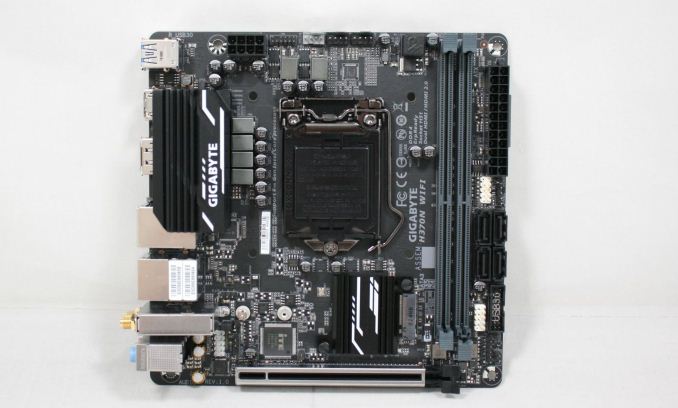
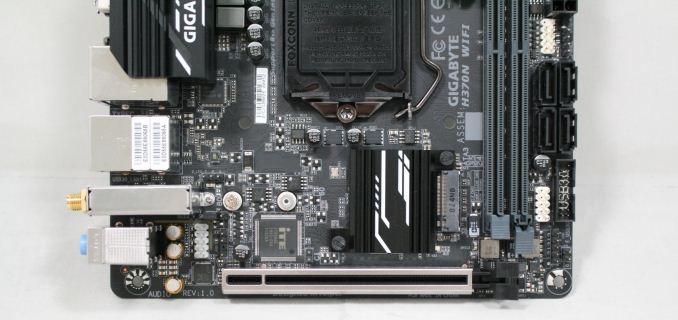
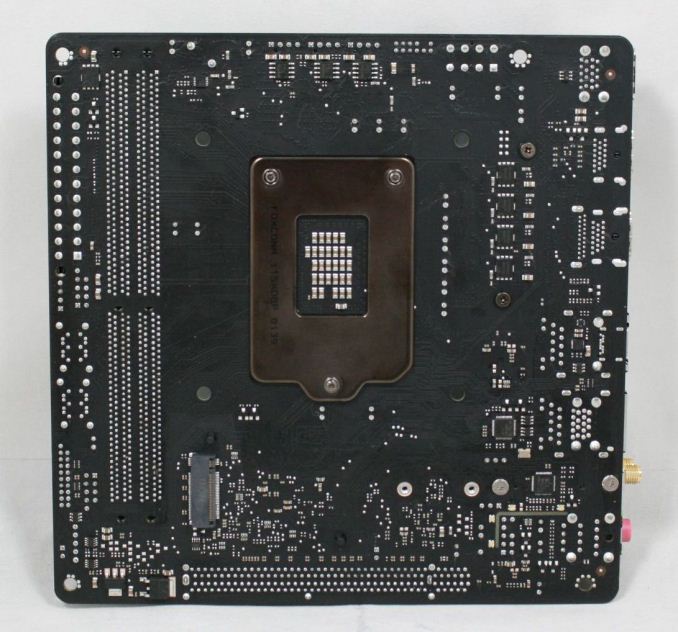
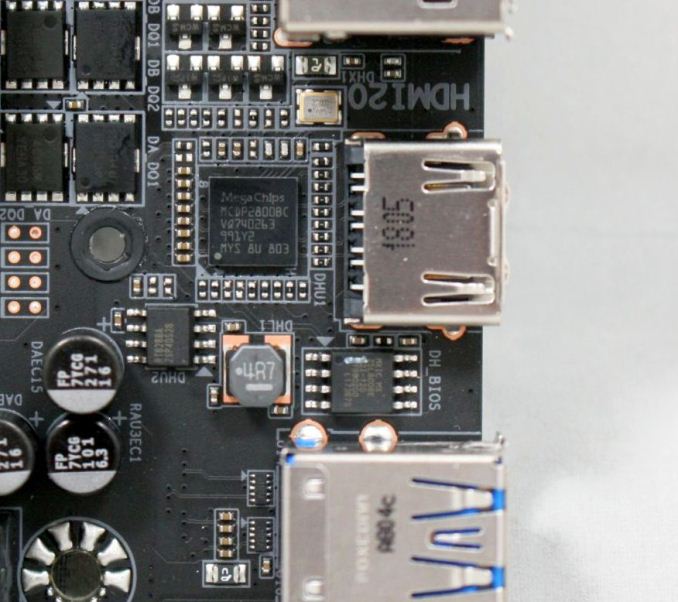
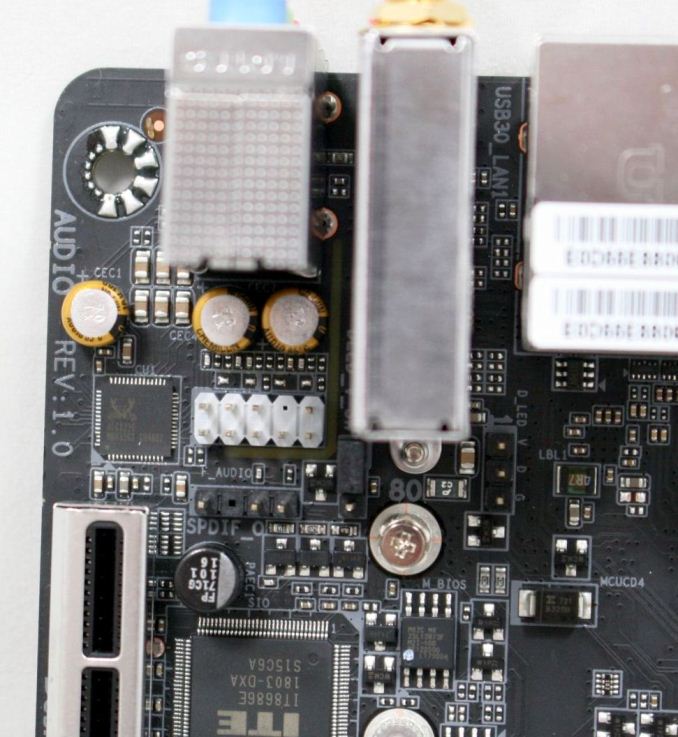
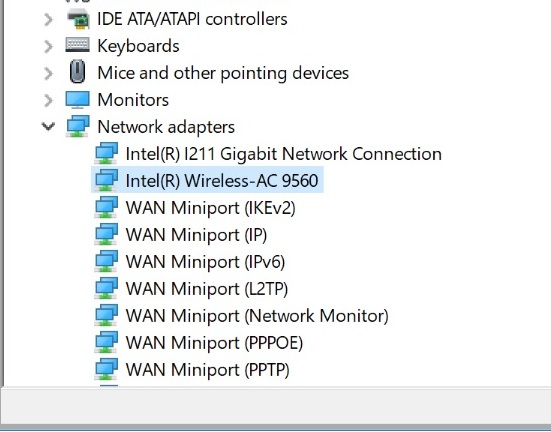

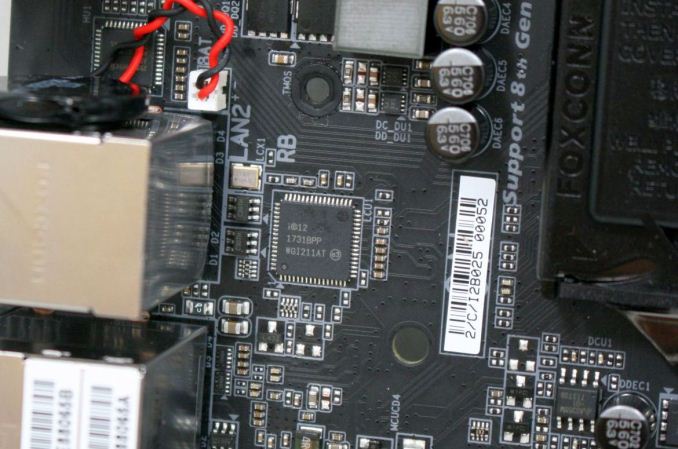

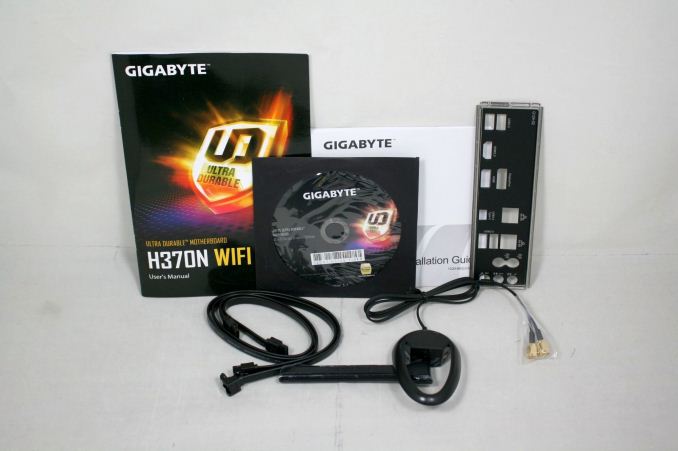














123 Comments
View All Comments
close - Tuesday, April 3, 2018 - link
Intel's "mobile" branding was always a clusterfuuu. They just relied on the reputation the desktop parts had and used the same branding and very similar model numbers to sell castrated CPUs with lower core count and much lower frequency that delivered nothing like the desktop ones.satai - Tuesday, April 3, 2018 - link
@close - how can anybody with a basic knowledge of HW expect, that a 15W part is going to perform similary to a 90W one?Ratman6161 - Tuesday, April 3, 2018 - link
Because they have no idea that one is 15W and the other is 90W. The other thing they have no clue about is that in my experience most mobile cpu;s are going to spend very little time at the advertised turbo speed. They will start thermal throttling almost instantlyclose - Wednesday, April 4, 2018 - link
@satai, so you mean the millions of people who go to a store or a website and buy a laptop know that it uses a 15W CPU and not a 65 or 95W CPU? Is this a joke?Most people hear about Intel or i7 and then go for the laptop that has that. And Intel capitalizes on the
close - Wednesday, April 4, 2018 - link
*Crappy 1997 comment system.Intel capitalizes on the confusion this creates. And it takes more than basic HW knowledge. Most people don't spend their days on tech websites. You would probably make the same mistakes in a field you're not familiar with.
HStewart - Tuesday, April 3, 2018 - link
These statements are confusing, everything here stated that the mobile 6 core CPU's do have Hyperthreading. 6C/12TMarketing wise - AMD does similar tactics calling Ryzen 7, Ryzen 3 .... maybe they will have Ryzen 9 one day.
Ratman6161 - Tuesday, April 3, 2018 - link
AMD is at least a little better on this. Generally speaking the 3/5/7 distinctions hold up...with potentially confusing exceptions of course.HStewart - Wednesday, April 4, 2018 - link
My first computer was an AND composed marking cup- at the time I thought I was getting an Intel 386 25mhz chip and they put Amd clone 25mhz chip. I spent $1700 and that was cheep thenSonic01 - Tuesday, April 3, 2018 - link
Still no Core Y / 4.5W updates... its been 2 years now :/jhoff80 - Tuesday, April 3, 2018 - link
I'm guessing that they're skipping to Cannon Lake / 10nm for the Y-series, but who knows.